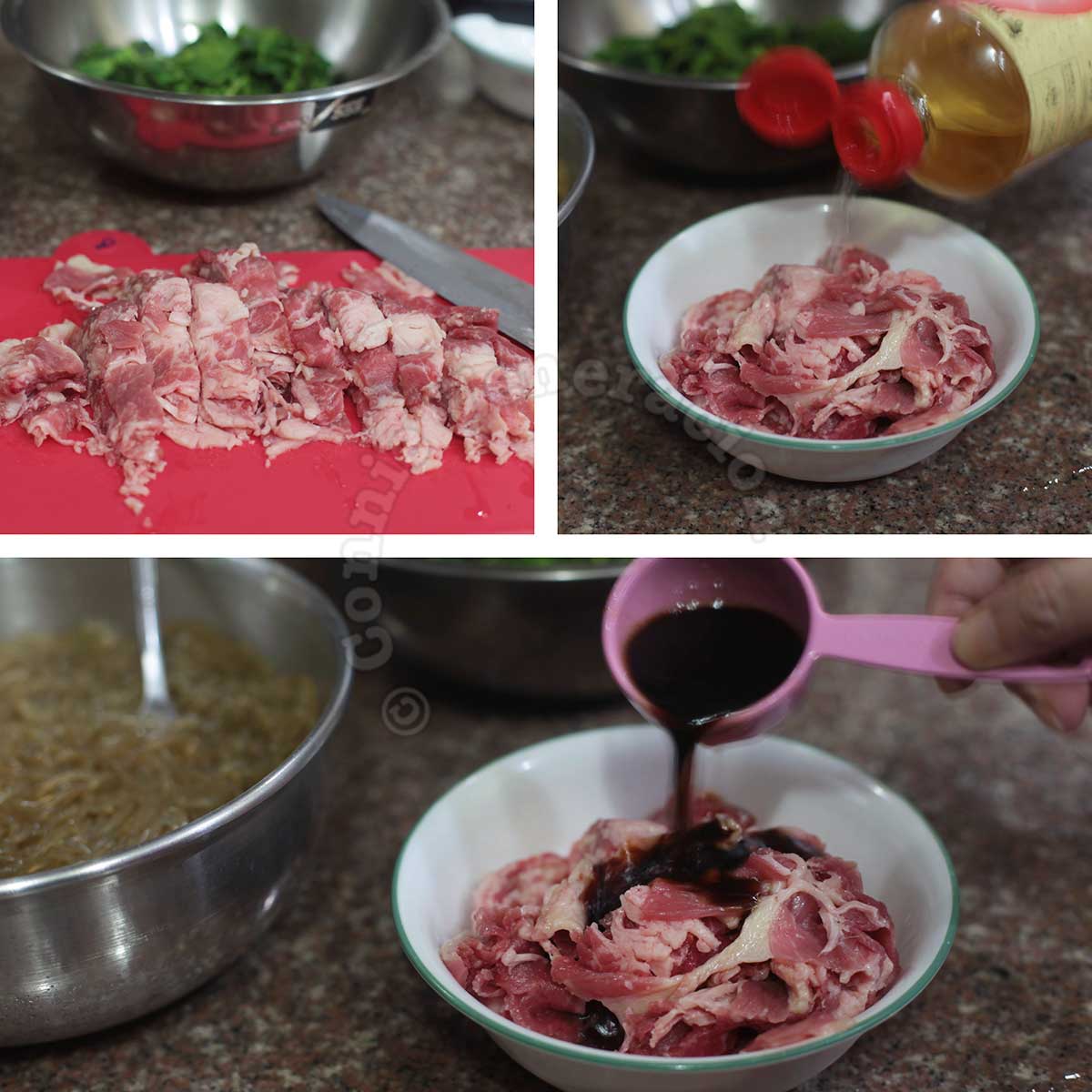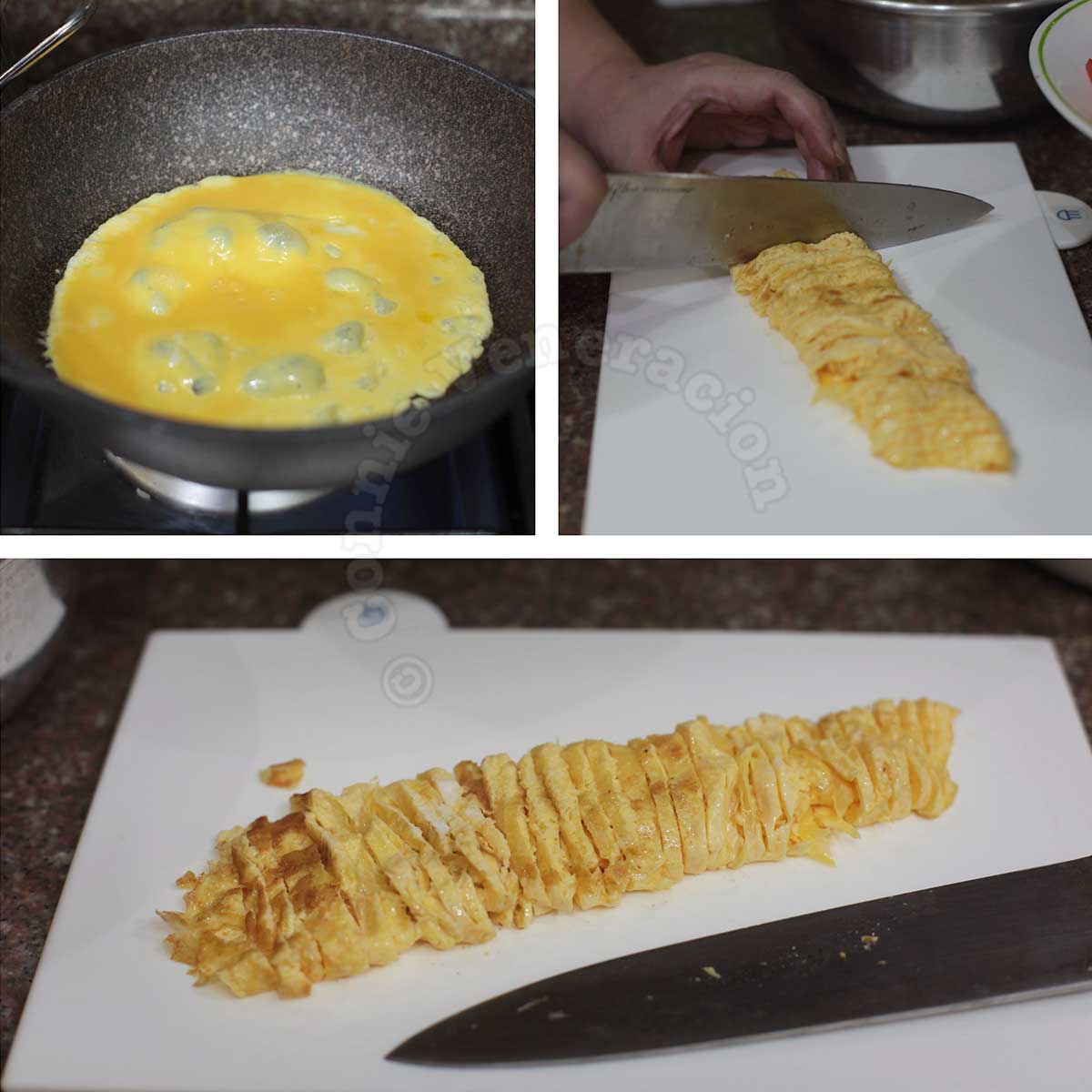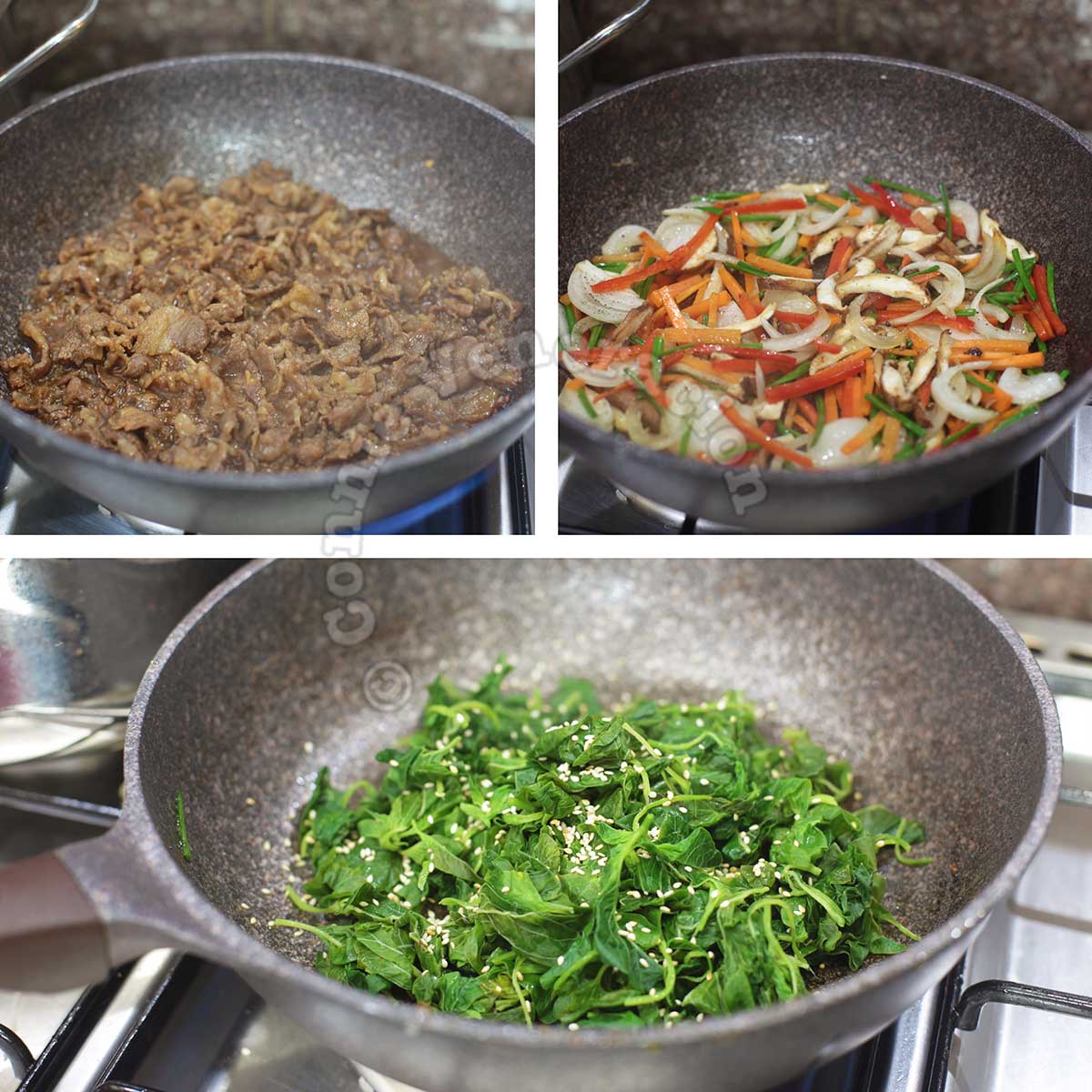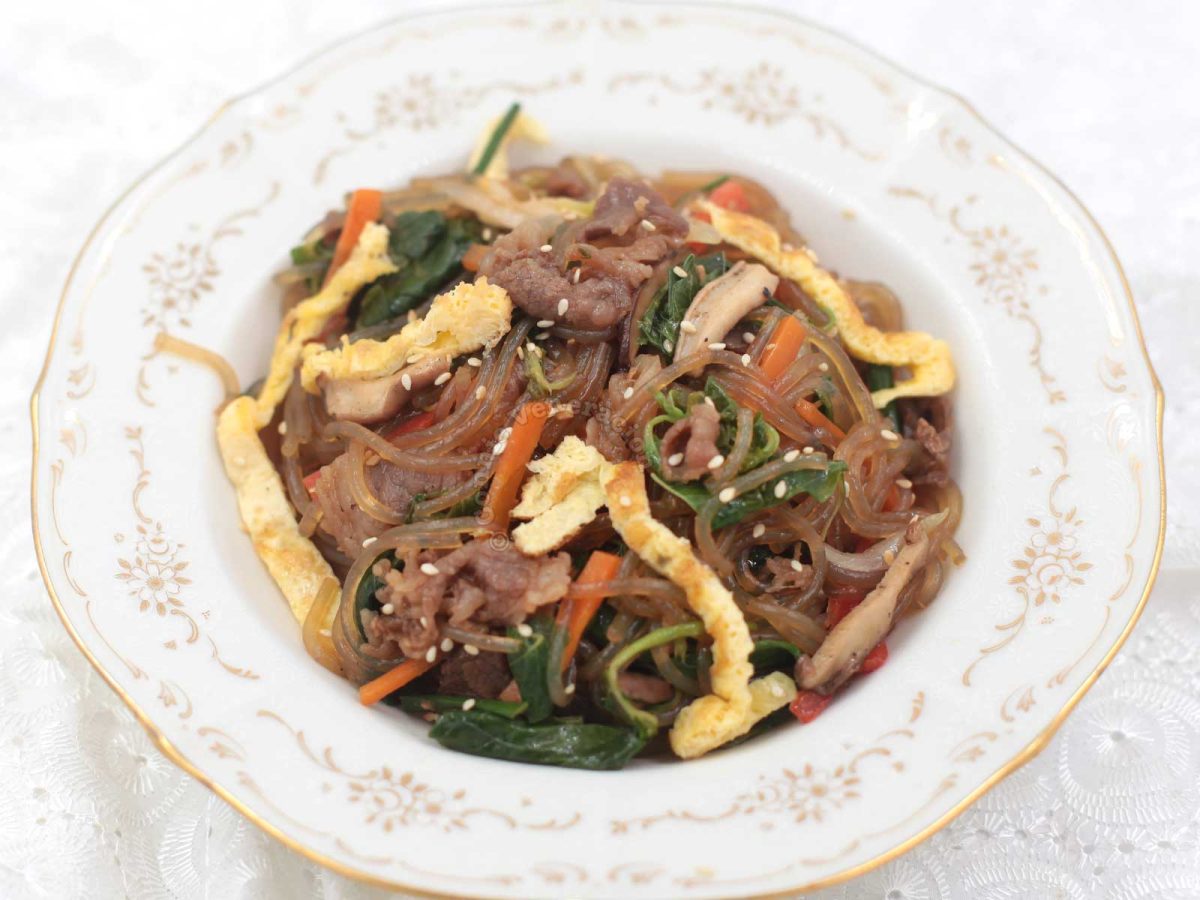While japchae is classified today as a noodle dish, its earliest form did not contain noodles at all. Originally, japchae was a stir fried mixed vegetable dish.
Origin of japchae
17th century Korea. It was the reign of Gwanghaegun, the 15th king of the Joseon dynasty. As a bit of trivia, the popular Netflix series Kingdom took place during the Josean era, a few years after the Japanese invasions between 1592 to 1598. Gwanghaegun reigned from 1608 to 1623. Based on the timelines, Gwanghaegun would be the king at the time the zombie plague in Kingdom. But let’s not mix up history with fiction, right?
So, Gwanghaegun was king and he had a court favorite, Yi Chung, who liked to regale the king with unusual dishes (what a suck-up, if you ask me, but that’s how to stay alive in the royal court). One time, there was a banquet and Yi Chung presented the king with japchae (“jap” means to mix; “chae” means vegetables), a dish of mixed vegetables and mushrooms.
The king loved the dish so much, japchae became a favorite dish at the royal court, and Yi Chung was promoted to a high-ranking position — the equivalent of the Secretary of Treasury (a suck-up, I told you).
The popularity of japchae spread to the masses, and it became a dish served at festivities and celebrations. Noodles weren’t added until the 20th century.
Modern-day japchae
As japchae has evolved over the centuries, the popular ingredients that go with the noodles are spinach, shiitake and beef. You may substitute pork and other vegetables. But for an authentic japchae, stick with dangmyeon and the correct seasonings.
First, mix together soy sauce, sesame seed oil and sugar. That’s your sauce. Don’t be shocked if it looks like you have so much sauce because you’re going to divide that.

Boil the dangmyeon, drain and give them an ice bath, drain again and toss with half of the sauce you have prepared.

For the beef, you want it thinly sliced. If you can get sukiyaki-cut or yakiniku-cut beef, the prep time will be shorter. Just stack the thin slices of beef, cut them into strips then toss with the remaining half of the sauce.

Peel and thinly slice an onion (shallots are even better), julienne a carrot and bell peppers, and thinly slice the caps of shiitake.
You will also need to mince garlic, blanch spinach and toast sesame seeds.

For the eggs, you may just scramble them and break into chunks. Or you may cook the eggs as a thin omelette, roll it and thinly slice it.

With all the prepping done, the cooking begins. Stir fry the beef, scoop out, stir fry the vegetables and mushrooms, scoop out, then stir fry the spinach and with toasted sesame seeds, and scoop out.

Then, it’s just a matter of combining everything together. Stir fry the noodles with the remaining toasted sesame seeds, toss in the vegetables and beef, garnish with the egg strips and more sesame seeds, and your japchae is ready to be served.
Korean stir fried vegetables and glass noodles (japchae)

Ingredients
Sauce
- 6 tablespoons light soy sauce
- 2 tablespoons sesame seed oil
- 6 tablespoons sugar
Noodles and meat
- 250 grams dangmyeon dry weight
- 300 grams thinly sliced beef
- 2 tablespoons rice wine
Vegetables
- 1 small carrot julienned
- 1 bell pepper julienned
- 12 to 15 stalks scallion
- 1 onion or 2 shallots
- 3 to 6 shiitake (if using dried, soak in warm water for about 20 minutes)
Stir frying
- 5 teaspoons cooking oil divided
- 1 teaspoon minced garlic divided
- salt
- pepper
- 3 to 4 cups spinach leaves blanched and squeezed (I measured after blanching and squeezing)
- 3 teaspoons toasted sesame seeds divided
To garnish
- 2 eggs
- toasted sesame seeds
Instructions
Make the sauce
- Stir all the ingredients together until the sugar is completely dissolved.
Precook and season the noodles
- Boil about a liter and a half of water in a pot. Drop in the noodles, pressing them down into the hot water. When the water starts boiling once more, lower the heat, cover the pot and let the noodles simmer for seven to eight minutes.
- Drain the noodles and dump into a bowl of iced water. This will stop the cooking and prevent the noodles from turning soggy. Let the noodles sit in the cold water for a few minutes then drain once more.
- Pour half of the sauce over the noodles and toss to distribute evenly. Leave to allow the noodles soak up the flavors.
Season the beef
- Cut the beef into strips about half an inch thick. Place in a bowl.
- Pour in the rice wine and the remaining sauce. Mix well.
Cook the eggs
- In a bowl, beat the eggs with salt and pepper.
- Heat one teaspoon of cooking oil in a clean pan. Pour in the beaten eggs. Cook until set. Roll up and move to a chopping board. Slice thinly.
Stir fry
- Heat another teaspoon of cooking oil in a wok. Mix the beef once more to make sure that all the sauce sticks to it. Spread on the hot oil. Sprinkle in half of the minced garlic. Stir fry for four to five minutes. Scoop out and move to a bowl.
- Heat another teaspoon of oil in the wok. Add the carrot, bell pepper, mushrooms, sliced onion, scallions and the remaining minced garlic. Sprinkle in salt and pepper. Stir fry for about two minutes. Scoop out and move to a plate.
- Heat the fourth teaspoon of oil in the wok. Spread the blanched and squeezed spinach leaves on the bottom of the pan. Sprinkle in salt, pepper and a teaspoon of toasted sesame seeds. Stir fry for a minute. Scoop out and transfer to a bowl.
- Heat the last teaspoon of cooking oil. Dump in the noodles. Sprinkle in a teaspoonful of toasted sesame seeds. Stir fry until the noodles are heated through.
- Add the stir fried vegetables to the noodles. Toss to distribute evenly.
- Add the beef and remaining teaspoon of toasted sesame seeds to the noodles and vegetables. Toss to distribute.
- Garnish the japchae with the egg and more toasted sesame seeds.







